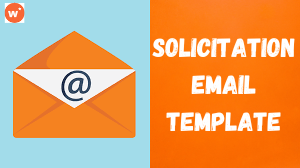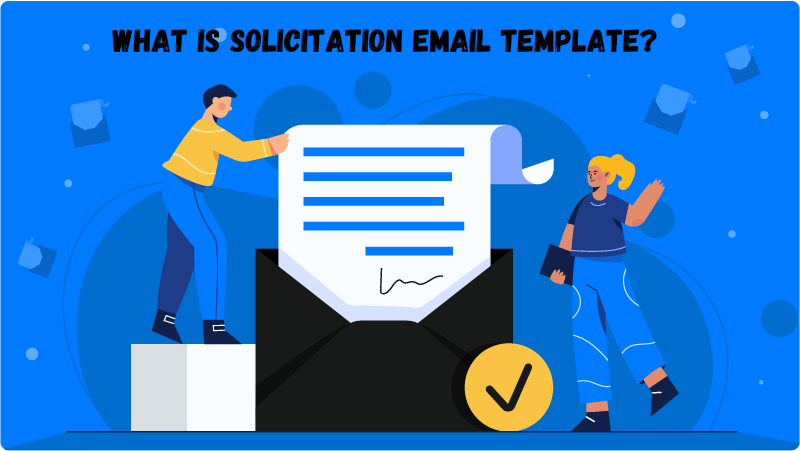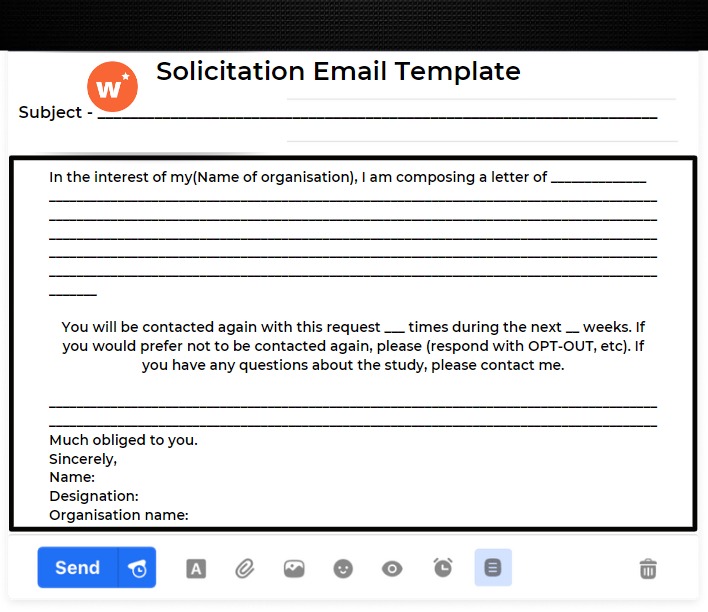
Did you know that sending emails is the most important source of online income for nonprofits? If you didn’t already, you do now! That is why it is critical for nonprofit marketing. Knowing how important email is doesn’t mean you know what kind of emails to send. There are so many emails, and solicitation emails are one of them. We understand how difficult it can be to determine why you should contact people and what you should ask them to do. Don’t just send out a solicitation email. Take your time with it. Best practices have been derived from millions of fundraising emails from thousands of nonprofit organizations. Therefore, to keep things simple, we’ll focus solely on the solicitation email template in this article.
Here’s a link to a solicitation email template to help you understand it better.
What Is Solicitation Email Template?
A Solicitation email is the best way to give contributors all possible information about your charitable organization to get them funded. Also, It appears that fundraising emails were sent from nonprofit organizations to benefactors. Such emails are used to raise funds for noble causes and charitable endeavors.
We should always be grateful for our assistance, whether in the form of money or items and materials that we require for a specific project. A solicitation letter is typically used for trading, requesting a donation, presenting at an event, or requesting a business. It is used to persuade you to act a certain way.

Solicitation Email Template
If you want to successfully raise funds via email, a solicitation email is a way to go. Writing a solicitation email allows you to stand out enough to be noticed by people in some foundation association and encourages them to donate money to the nodal cause.
Use Bold – Catchy – Underlined Words
To ensure that people who are only scanning the email get the gist of your message, use bolded, underlined, and italicized words. It should also include headlines and a P.S. to draw readers’ attention and ensure that the most important parts of your solicitation message are seen by everyone.
Include Defined Ask
To be successful, solicitation emails should include a specific ask. It should also include an ask that is a question and requests a specific range of gift amounts. For example, whether they can afford this amount or whether they are willing to donate this much amount.
Create Short Emails
A good solicitation email always has fewer lines. They are typically 400-500 words long. Remember that many people will read your email on their phone or tablet, and they will not want to scroll through 5 or 7 typewritten pages. However, to make your email appealing and clear, keep it short and don’t stray from the main topic or message.
Add Appropriate Subject Line
Remember that your subject line is one of the most important parts of your email. Many of the people on your list will decide whether or not to open and read your email appeal based on the subject line you write. So, take special care in crafting appealing subject lines that lure people to open your emails.
Send Multiple Emails
To help you break through the confusion, always send a “flight” of 2-4 emails. Personal emails, advertisements, and nonprofit solicitations clutter the average person’s inbox. To break through and ensure that your emails are read, send multiple emails for each email fundraising campaign. Therefore, each email in your email flight should focus on the same message and include the same request.
Keep It Simple
One final rule to remember as you prepare your next solicitation email is to not go overboard. While your email newsletters may be highly designed with numerous images and graphic headers, your fundraising emails should be relatively simple. Concentrate on conveying the message compellingly and emotionally. Your email newsletters should drive traffic back to a variety of pages on your website, but your solicitation email should be solely focused on getting people to click the donate button or link.

Conclusion
Above, I have provided all of the information needed for you to better understand solicitation emails, along with a template. Remember that prospecting for solicitation emails takes time. The more time you spend doing initial research, the better your emails will turn out. Don’t rush through the process. Therefore, focus on earning your prospect’s trust first, and the opportunity will fall into place naturally.


